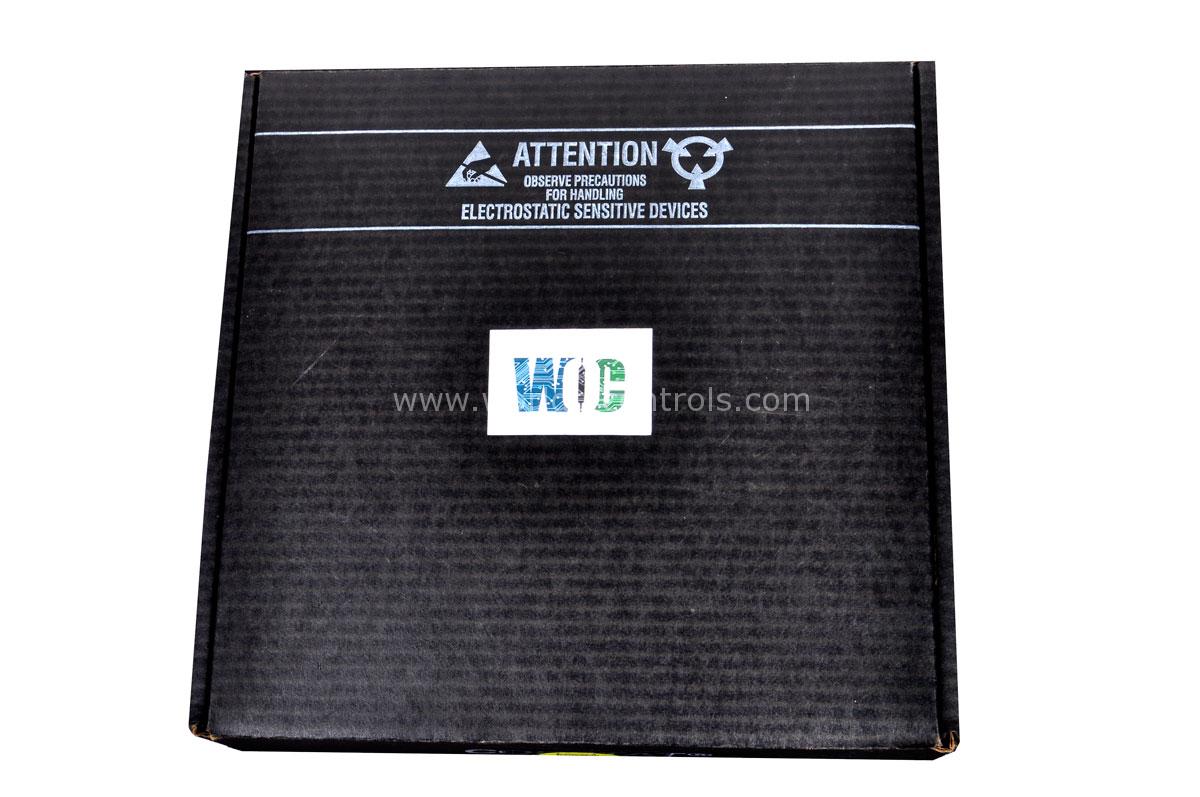SPECIFICATIONS
Part Number: IS210ERGTH1A
Manufacturer: General Electric
Series: EX2100
Function: Ground Detector/Regulator
Connectors: One 9-Pin
Number of Conduction Sensors: 4, Unmarked
Number of Four-Position Terminal Strips: Two
Availability: In Stock
Manual: GEH-6721
Country of Manufacture: United States (USA)
Functional Description
IS210ERGTH1A is a Ground Detector/Regulator developed by GE. It is a part of EX2100 control system. It serves as regulator within EX2100 control systems, whether they are in simplex or redundant configurations. Its primary purpose is to facilitate the integration of third-party ground detector options into these systems, enhancing their ability to detect and respond to ground faults effectively. It acts as an intermediary between the EROC and the third-party ground detector. It bridges the gap between the two components by transforming the signals transmitted through a 9-pin connector on the EROC into terminal screw connections that the third-party ground detector can interpret and act upon.
Features
- The Exciter Regulator Options Card itself is responsible for managing a variety of functionalities related to exciter regulation, and it extends its capabilities by collaborating with the ERGT in order to accommodate third-party ground detection capabilities. This integration is vital for maintaining the overall stability and reliability of the system, as it enhances the system's ability to identify and respond to potentially hazardous ground faults.
- The third-party ground detector, interfaced through the ERGT, offers a trio of outputs that provide valuable information regarding the detected ground conditions:
- Ground Alarm: This output is triggered when a ground fault is detected. It acts as an immediate alert, notifying the system that a ground fault has occurred and requires attention or corrective action.
- Ground Detector Malfunction: In the event that the third-party ground detector experiences a malfunction or fails to function as expected, this output will be activated. It ensures that the system is made aware of any issues related to the functionality of the ground detector itself.
- Diode Fault Monitor: This output is specifically designed to monitor the status of diodes within the ground detection system. Diodes play a critical role in the proper functioning of electrical systems, and monitoring their status helps prevent potential failures that could compromise the system's integrity.
- It is designed to be highly efficient without the need for a dedicated power supply. This design choice simplifies its integration into the system, streamlining the overall setup and reducing potential points of failure. Furthermore, the ERGT offers flexibility in terms of mounting options; it can be either DIN-rail mounted or base mounted, accommodating different installation preferences and requirements.
- When connecting the ERGT to the system, considerations such as wire sizes, cable lengths, shield grounding, and system grounding are paramount to ensuring proper functionality and reliability. These factors impact the quality of signal transmission and the overall integrity of the ground detection system. Proper wire sizing and cable management help prevent signal loss and interference, while appropriate grounding practices ensure reliable and accurate signal transfer.
Application Data
- It is a specialized component designed to facilitate the seamless integration of third-party ground detection capabilities within the EX2100 regulator control systems. Unlike some other components, the ERGT is characterized by its simplicity and functionality. It lacks certain features commonly found in more complex components, yet its essential role in the system cannot be understated.
- Includes the absence of fuses, test points, LEDs, and adjustable hardware. This streamlined design is intentional, reflecting the focused purpose as a bridge between the Exciter Regulator Options Card and the third-party ground detector. By omitting these extra components, the component remains straightforward and reliable, serving its primary function without unnecessary complexities.
- In terms of physical connectivity, it interfaces with the EROC through a vertical 9-pin plug connector denoted as J1. This connection channel enables the transmission of signals between the EROC and the ERGT, effectively relaying information related to ground detection and other pertinent functions.
- On the other side, the ERGT interfaces with the third-party ground detector through two four-position terminal strips designated as TB1 and TB2. These terminal strips provide a straightforward and reliable means of connecting the ERGT to the ground detector, ensuring efficient communication and data exchange between the two components. This direct connection facilitates the accurate transfer of signals, which is crucial for the reliable detection and response to ground faults.
- Physical installation involves mounting options. When not mounted on a DIN rail, the module can be securely affixed using mounting hardware through holes labeled E1-E4. This method of installation provides chassis ground, enhancing the overall stability and grounding within the system. Chassis ground is essential for maintaining proper electrical connections and minimizing interference, contributing to the overall effectiveness of the ground detection system.
WOC is happy to assist you with any of your automation requirements. Please contact us by phone or email for pricing and availability on any parts and repairs.
FREQUENTLY ASKED QUESTIONS
What is IS210ERGTH1A?
It is a Ground Detector/Regulator developed by GE
Can the ERGT be replaced online in redundant applications?
No, the it is not online replaceable in redundant applications. This means that in situations where there is a redundancy setup, the ERGT cannot be replaced while the system is actively online and operating. Special precautions and procedures would need to be followed for replacing the ERGT in such scenarios.
What precautions should I take when handling the board or its mounting hardware?
It's important to avoid dropping any mounting hardware into the equipment housing. Doing so could potentially lead to equipment damage or even personal injury, especially when power is reapplied to the system. Taking care during the installation and replacement processes helps prevent these unwanted outcomes.
How does the card enhance safety in the system?
It plays a pivotal role in enhancing safety by enabling the integration of third-party ground detection capabilities. Ground faults pose a significant risk to electrical systems, and the board's seamless interface with the third-party ground detector aids in quickly detecting and responding to these faults, minimizing potential hazards and system downtime.
